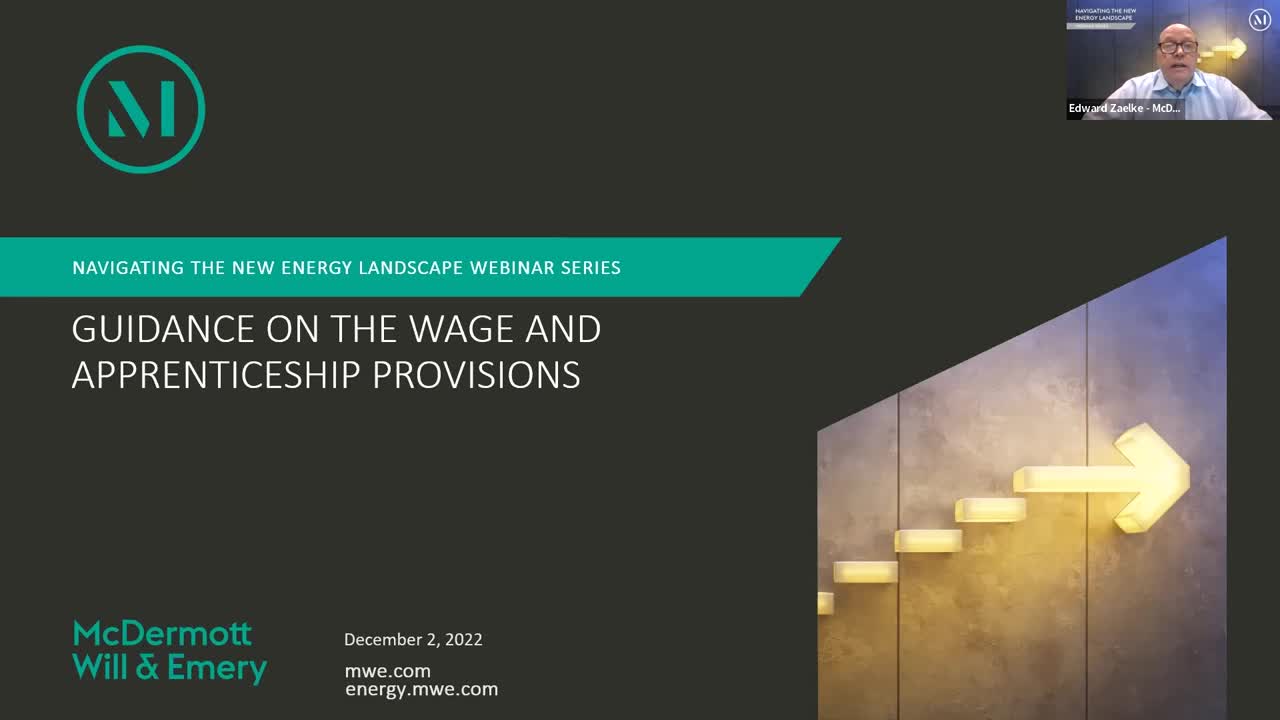The Navigating the New Energy Landscape webinar series came back last week for a special bonus session that focused on the just-released Internal Revenue Service (IRS) guidance on the wage and apprenticeship provisions included in the Inflation Reduction Act of 2022 (IRA).
During this webinar, McDermott Partners Heather Cooper and Philip Tingle walk through the new guidance, covering key issues and drilling down into the impact of the 60-day countdown clock for which developers have to implement these provisions or face the loss of critical tax benefits for their renewable energy projects.

Below are key takeaways from the discussion:
1. IRS Notice 2022-61 provides additional guidance on the prevailing wage and apprenticeship requirements included in the IRA, which apply to a broad range of energy tax credits. Projects that do not meet these requirements potentially face an 80% reduction to any applicable energy tax credits. However, due to the 60-day delay between the release of the guidance and when the rules take effect, projects that begin construction before January 30, 2023, will not be subject to the requirements.
2. Notice 2022-61 also provides clarification (largely by reference) to existing US Department of Labor (DOL) regulations and prior IRS guidance. For example, it clarified that the existing IRS framework for determining the beginning of construction will be preserved. Other developments include a contemporaneous recordkeeping requirement necessary to establish compliance with the prevailing wage and apprenticeship requirements, clarification on the good faith effort exception to the apprenticeship requirements, and a new DOL email address for questions regarding prevailing wage determinations.
3. Despite this guidance, many questions remain unanswered. While many key definitions and rules are clarified by reference to DOL rules, this has not eliminated uncertainty regarding their implementation. McDermott’s energy & project finance team is working closely with the Firm’s employment team to tap into their vast experience with the DOL.
4. These developments raise many new considerations for developers. Those that can start construction before January 30 may wish to determine how to meet the beginning of construction requirements promptly and effectively before the guidance takes effect. Those that cannot start construction before January 30 will need to consider how to manage potential risks that arise from the new rules. This could require additional transactional scrutiny when drafting and negotiating around compliance.
To access past webinars in the Navigating the New Energy Landscape series and to begin receiving Energy updates, including invitations to the webinar series, please click here.
read more

 Subscribe
Subscribe

